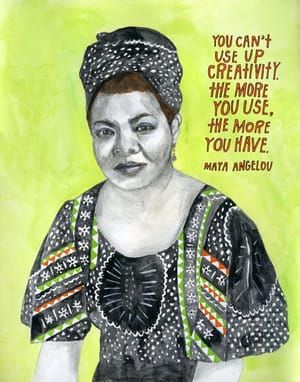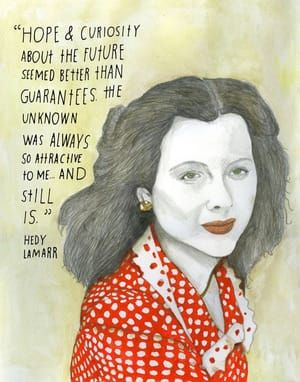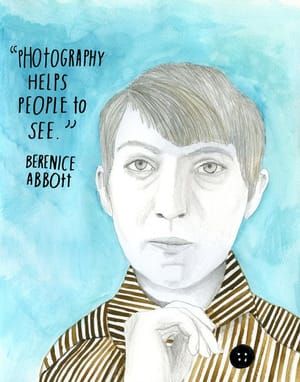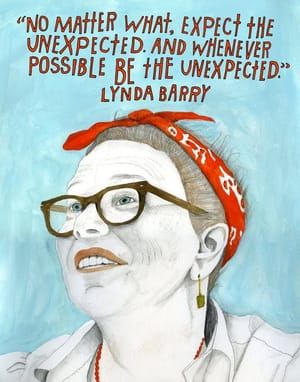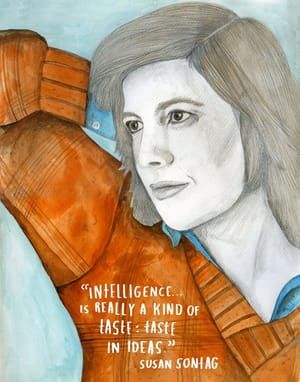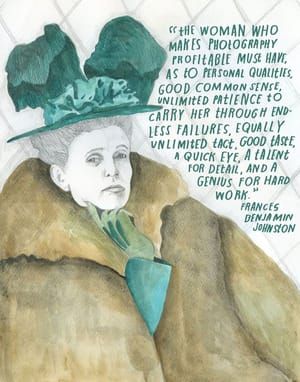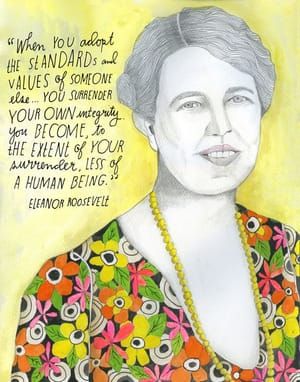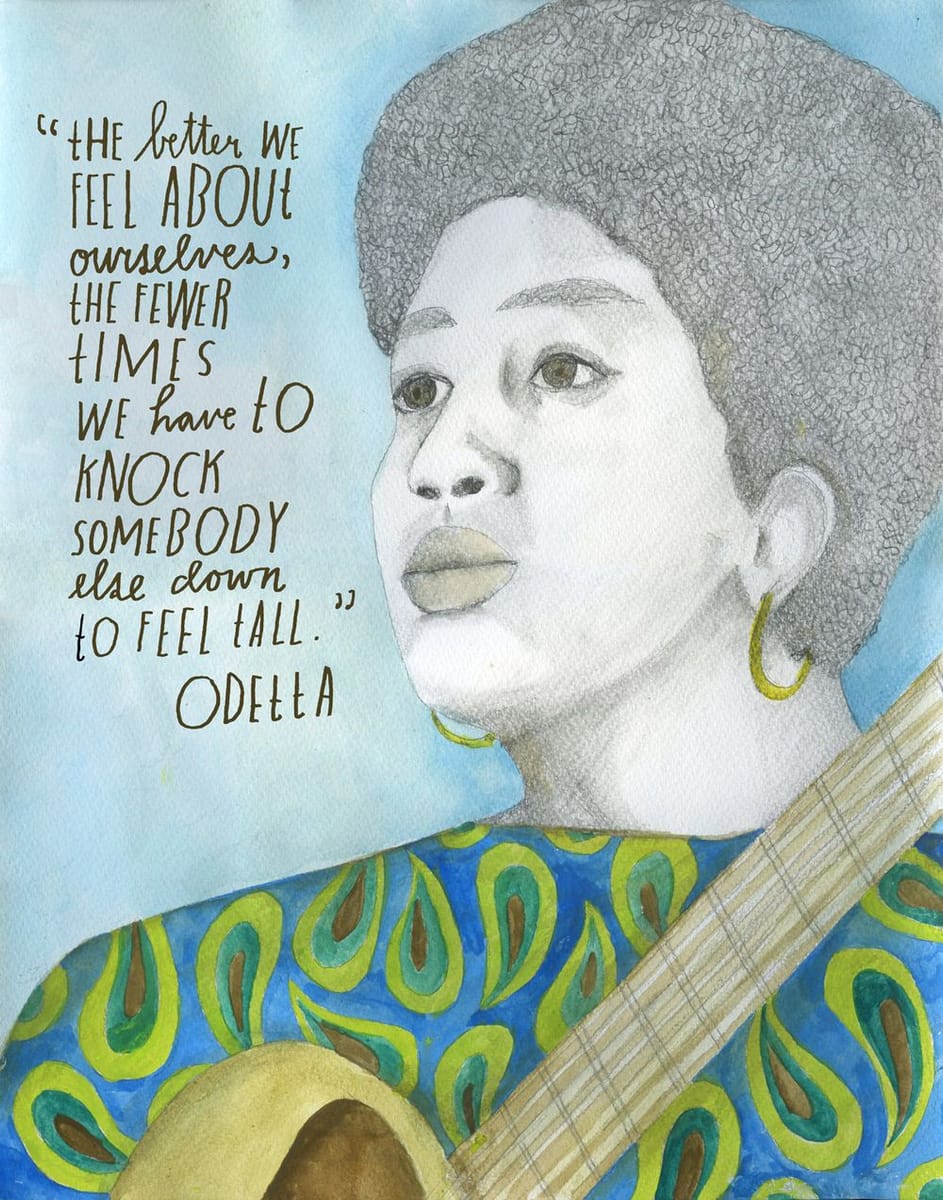

Odetta, 2013
Lisa Congdon
Few artists have captivated audiences with equal enchantment in coffeehouses and at Carnegie Hall, have sung for prisoners and for presidents, have come to be known by first name only and to speak for millions at the same time, becoming the voice of a movement that shaped the course of history. But singer, songwriter, and activist Odetta Holmes (December 31, 1930–December 2, 2008), better-known simply as Odetta and widely celebrated as the “voice of the civil rights movement,” did just that.
Dr. Martin Luther King, Jr. revered her as the “queen of American folk music.” The New York Times anointed her a “mother goddess” of folk and blues. The Washington Post called her a “matriarch for a generation of folk singers.” Reconstructionist Maya Angelou proclaimed that “if only one could be sure that every 50 years a voice and a soul like Odetta’s would come along, the centuries would pass so quickly and painlessly we would hardly recognize time.”
Odetta’s influenced fueled a remarkable creative lineage that stretches across Bob Dylan, Janis Joplin, Paul Simon, Carly Simon, Tracy Chapman, Nick Cave, Jewel, and Nellie McKay. In Down the Highway: The Life of Bob Dylan, Dylan cites her 1956 album Odetta Sings Ballads and Blues – the same record that inspired young Janis Joplin to become a singer – as a key turning point in his musical career:
The first thing that turned me on to folk singing was Odetta… . I heard a record of hers in a record store… . Right then and there, I went out and traded my electric guitar and amplifier for an acoustical guitar.
So monumental was Odetta’s cultural impact that her life was even adapted in a children’s book.
Above all, however, Odetta considered herself a “musical historian” who brought back to life – to new, more dimensional life, thanks to her remarkable vocal range of soprano-to-baritone – the forgotten songs of chain gangs, cowboys, and the working poor, which she herself excavated from the archives of the Library of Congress. She saw in that music a way to deconstruct the conceits of culture, something she articulated beautifully in a 1965 New York Times interview:
In folk music, complex emotions are spoken about with such simplicity that it’s the highest form of art to me. You can unclutter things.
[http://thereconstructionists.org/page/3]
What do Buddhist artist Agnes Martin, Hollywood inventor Hedy Lamarr, and French-Cuban author Anaïs Nin have in common? Their names may not conjure popular recognition, and yet, for Lisa Congdon and Maria Popova, these women represent a particular breed of cultural trailblazer: female, under-appreciated, badass. They are “Reconstructionists,” as the writer-illustrator duo call them – and for the next year, they’ll be celebrated on a blog of the same name. Every Monday for 12 months, The Reconstructionists will debut a hand-painted illustration and short essay highlighting a woman from fields such as art, science, and literature. The subject needn’t be famous, but she will, as Popova, the creator of Brain Pickings, puts it, “have changed the way we define ourselves as a culture." We spoke with Popova, and illustrator Congdon, about the inspiration....
[http://storyboard.tumblr.com/post/41698890843/the-reconstructionists-celebrating-badass-women]
© 2013 Lisa Congdon
Lisa Congdon
artistArthur
coming soon


